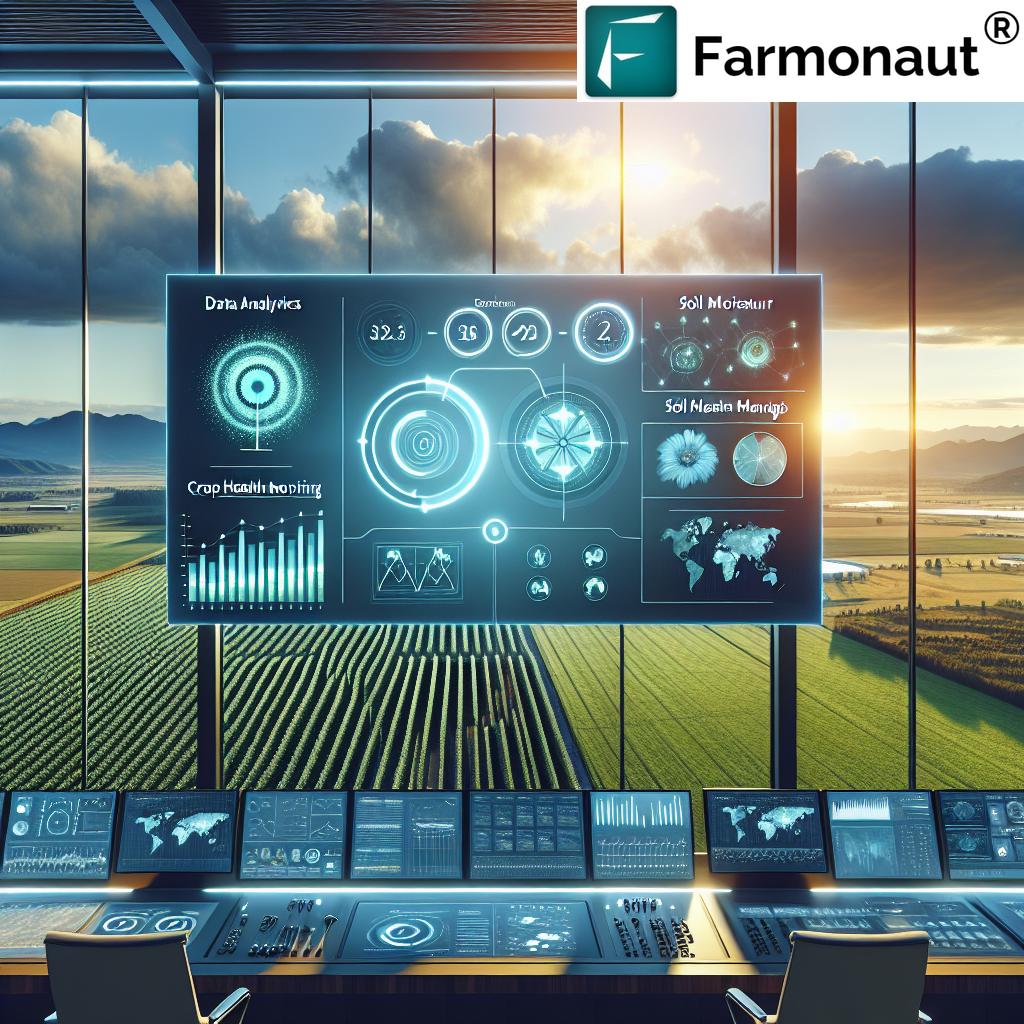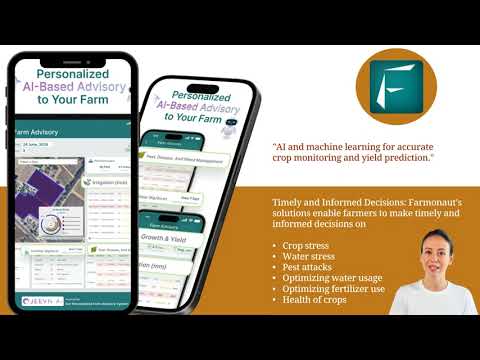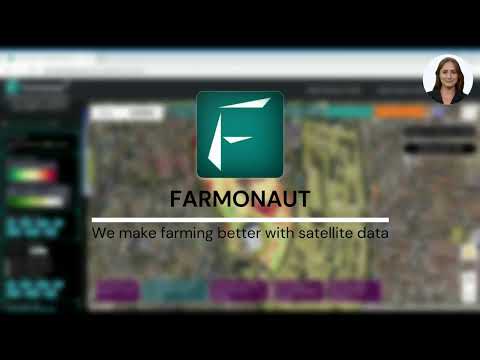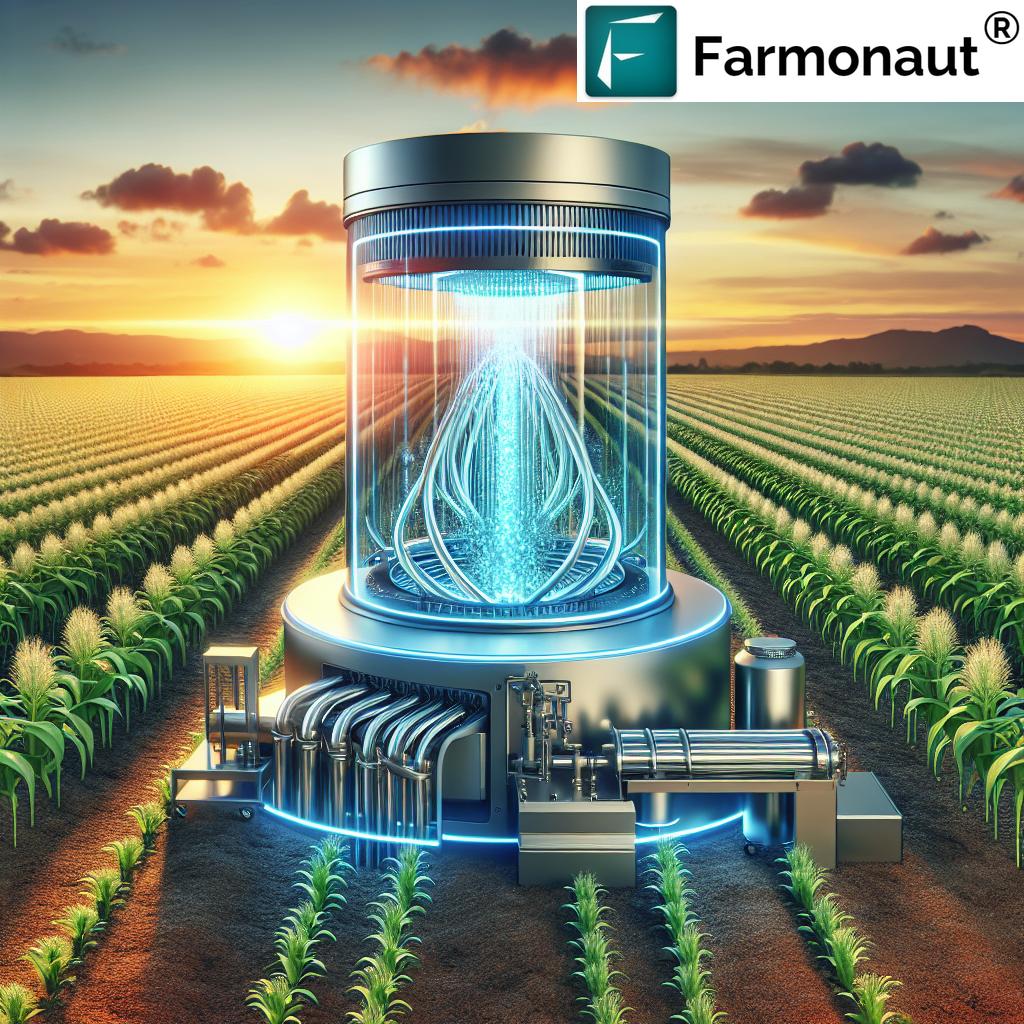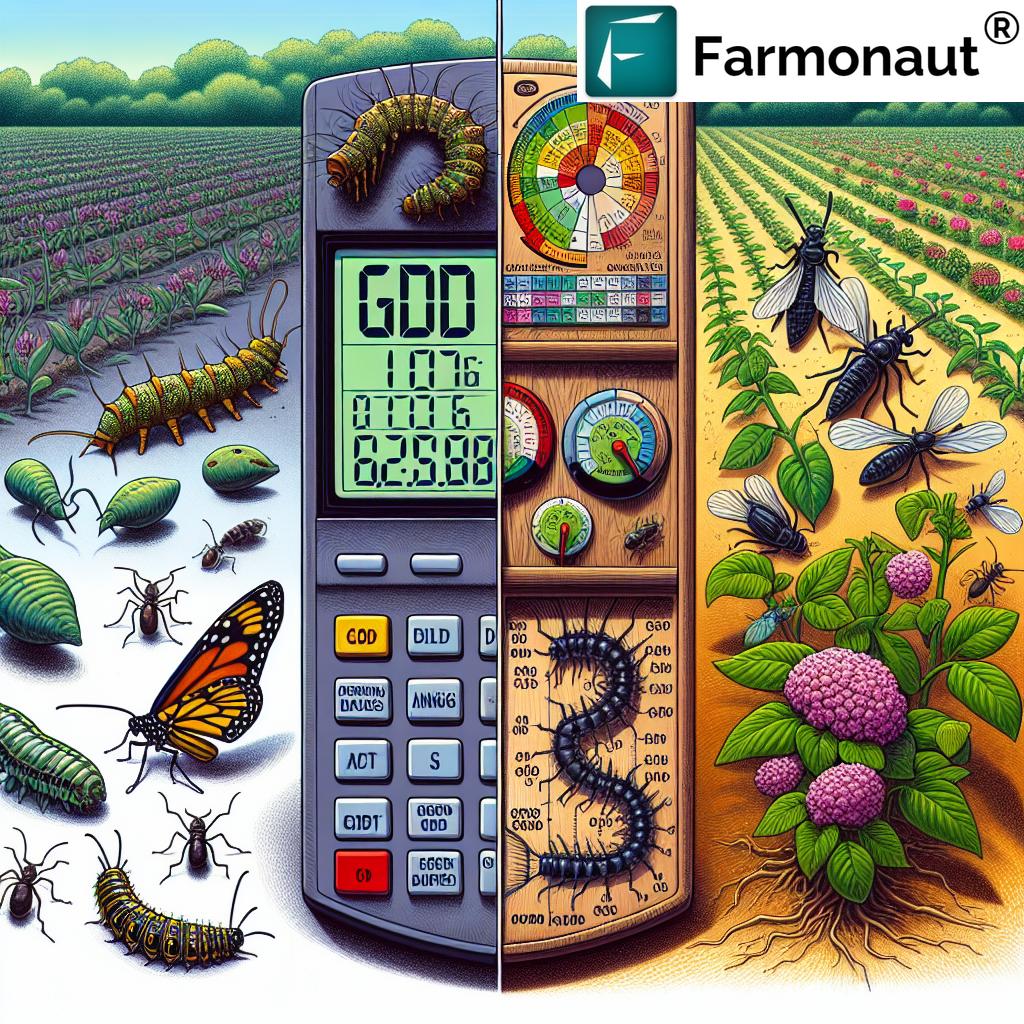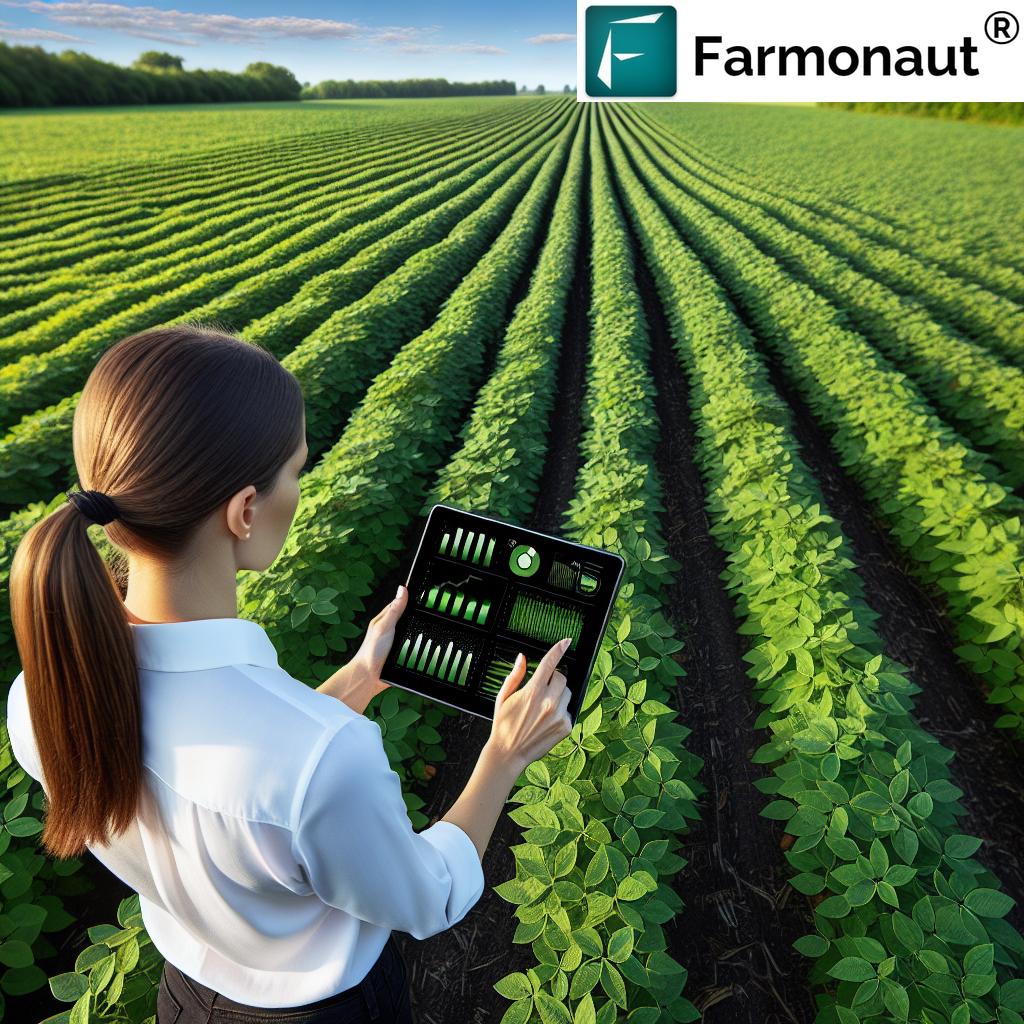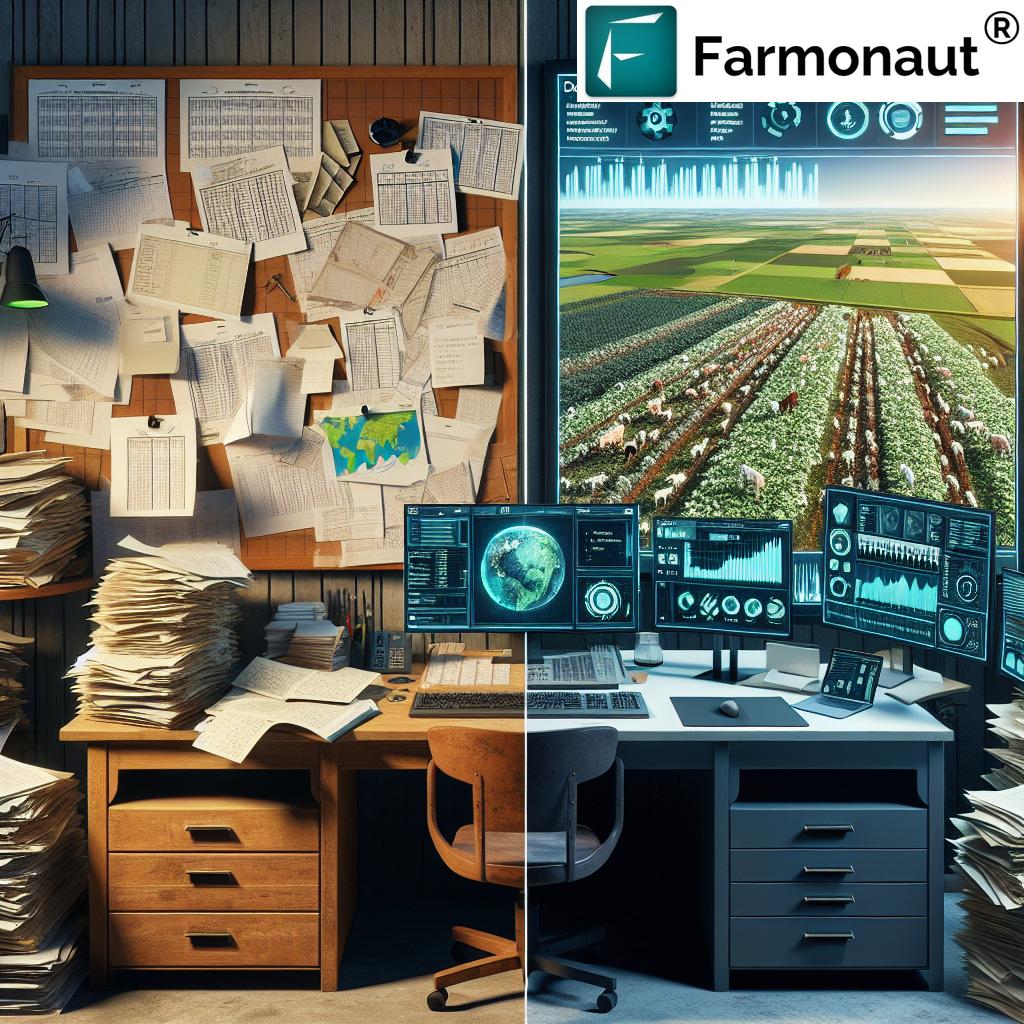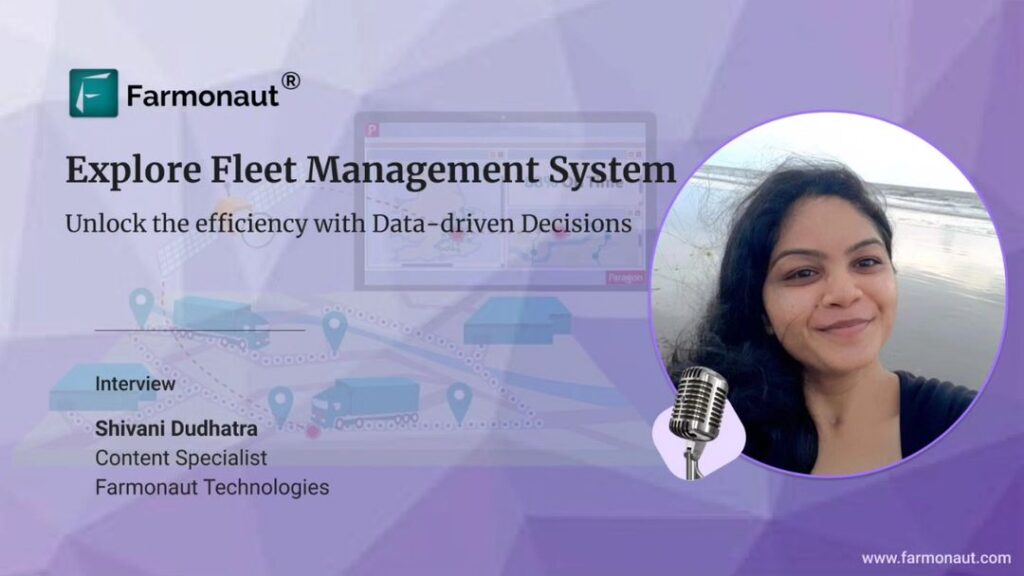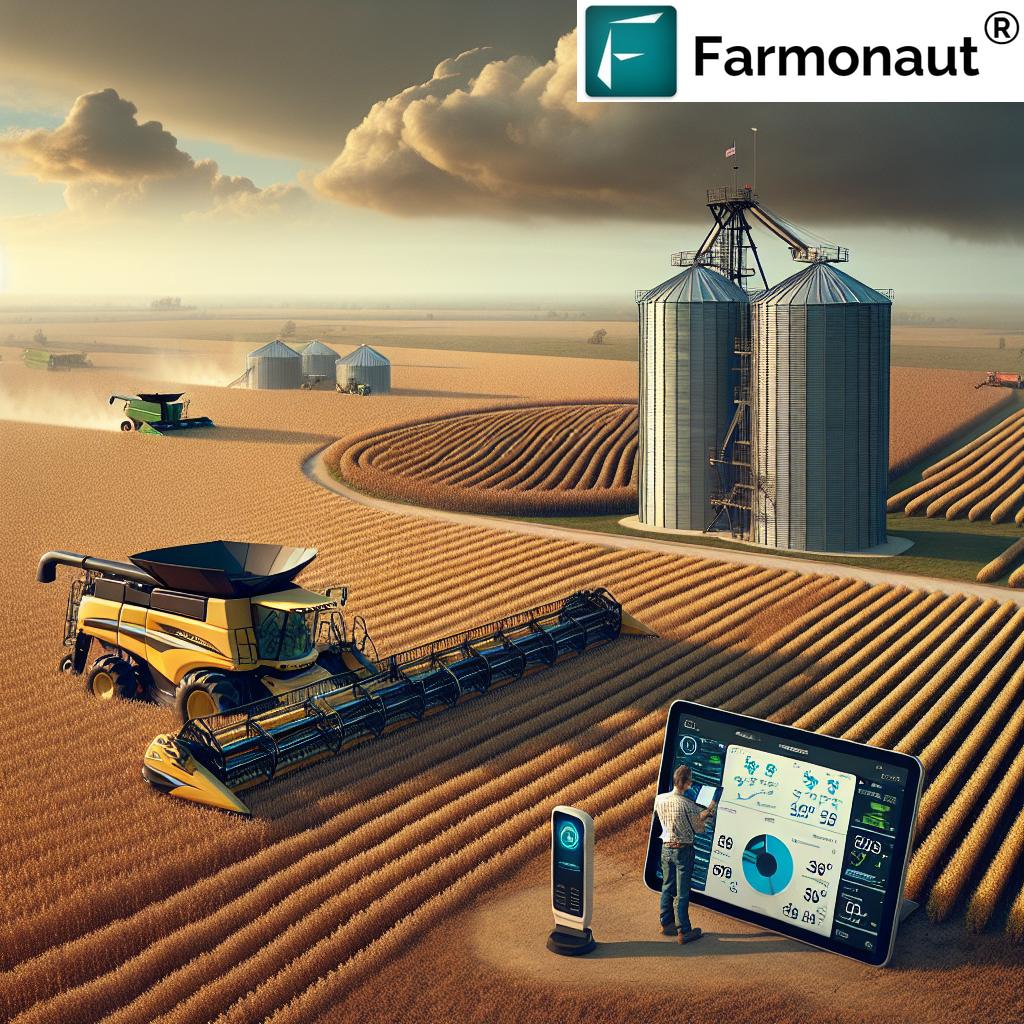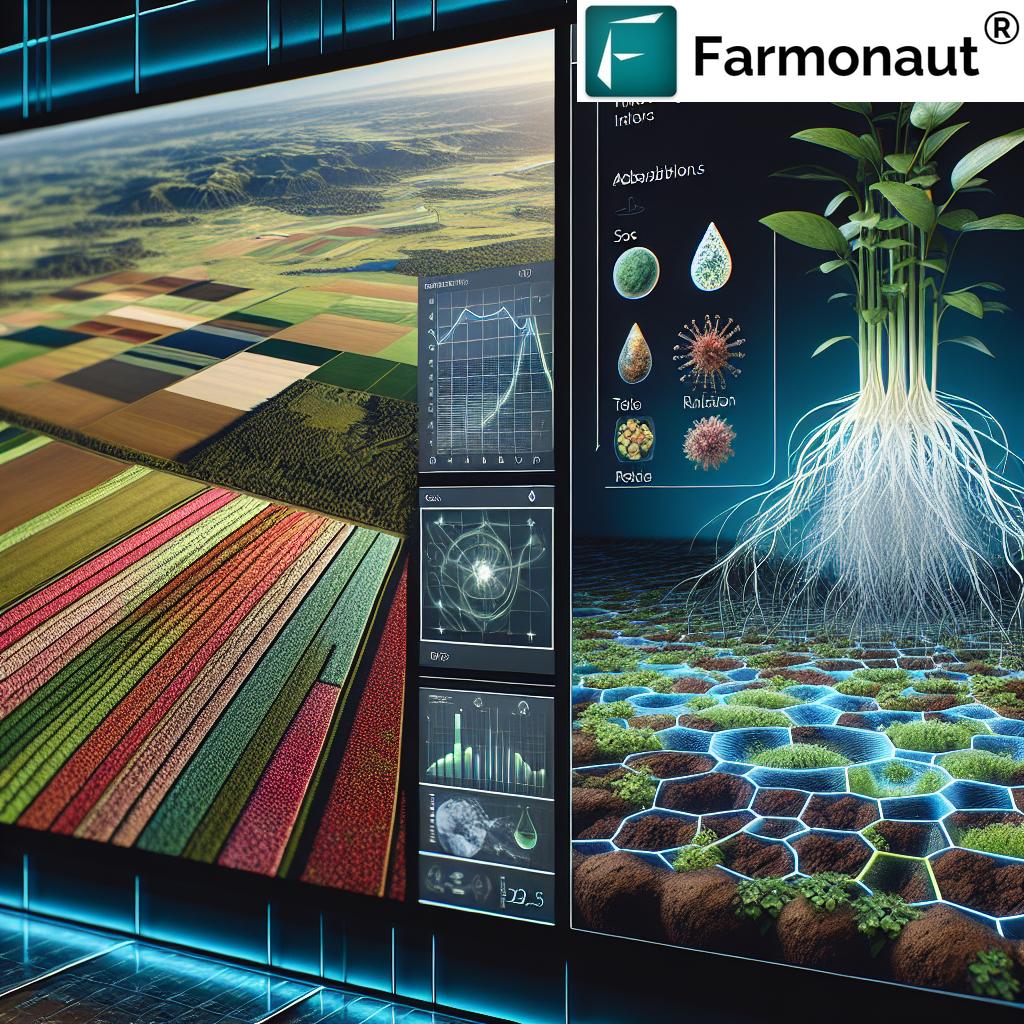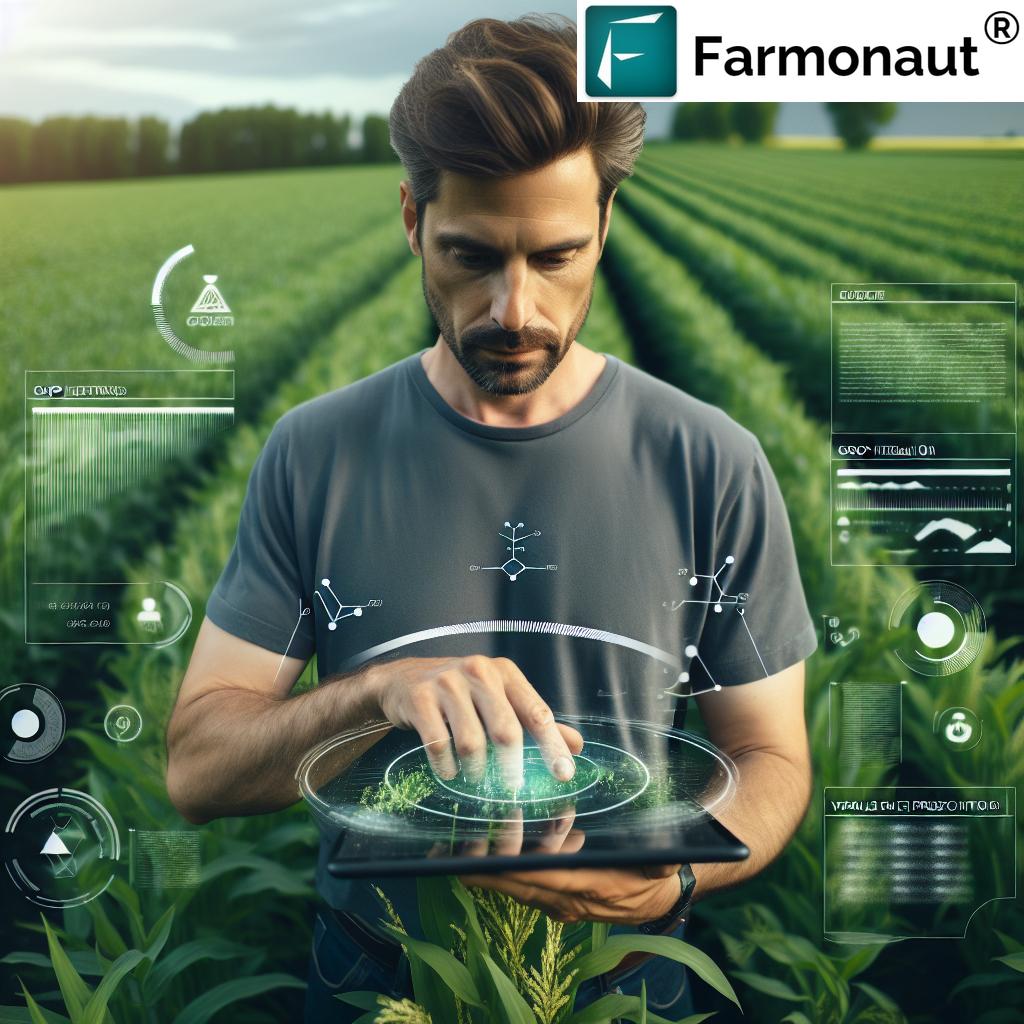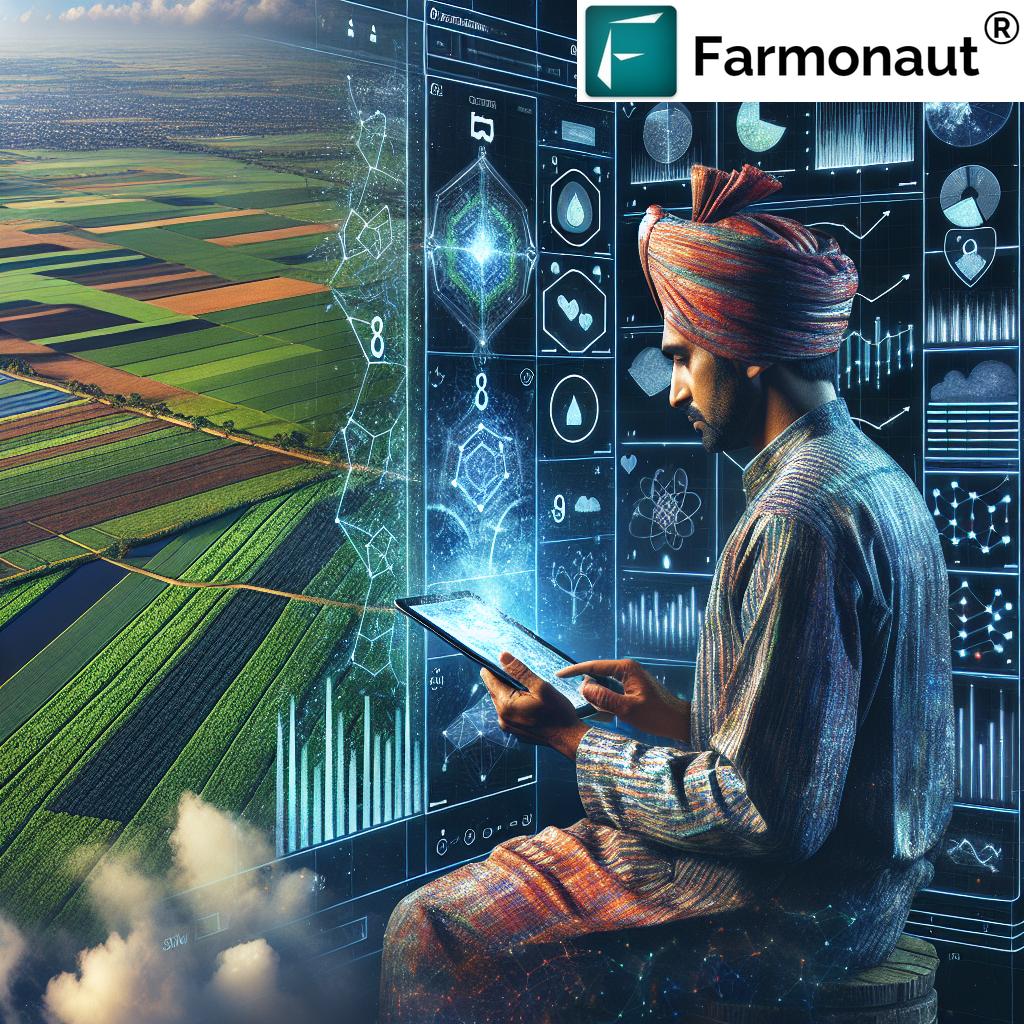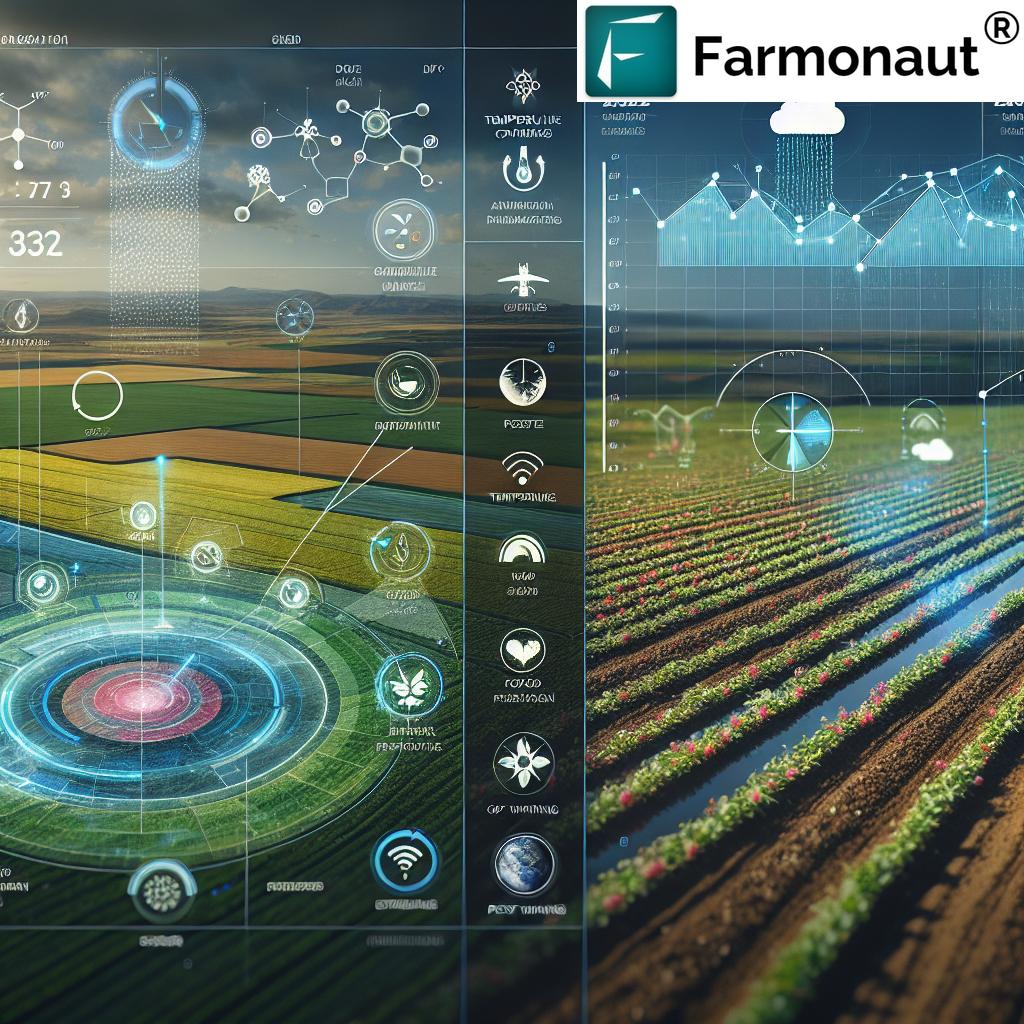Farming Software Solutions: 7 Tools You Must Try Now!
“Farming software can increase crop yields by up to 20% through precision data analytics and optimized resource management.”
The Role of Farming Software Solutions in Modern Agriculture
In today’s rapidly evolving agricultural landscape, technology and data have become the foundation of progress. As farmers and agribusinesses face increasing demands for productivity, sustainability, and traceability, farming software solutions have emerged as indispensable digital assets. By deeply integrating precision technologies, remote analytics, automation, and smart data-driven insights, these tools are revolutionizing how we manage fields, monitor assets, optimize resources, and run farm operations for enduring success.
Farming software solutions now encompass a comprehensive array of digital platforms and mobile applications, from simple farm management systems to advanced satellite-based crop monitoring, AI-powered advisory platforms, blockchain-backed supply chain management solutions, and more. At their core, these tools give us the ability to gather, analyze, and leverage agricultural data—transforming traditional farming into an intelligent, adaptive, and more sustainable practice.
Let’s explore how adopting the right software solutions can empower us to:
- Monitor real-time field and crop conditions
- Plan and schedule farm tasks more effectively
- Optimize input use (water, fertilizer, pesticides, labor)
- Enhance operational efficiency and transparency
- Improve overall farm profitability and sustainable farming practices
- Meet the increasing demands for supply chain traceability
Benefits of Implementing Modern Farming Software Solutions
As we embrace digital farm management solutions, we unlock a host of transformative benefits that address both operational and strategic aspects of agricultural management:
- Informed Decision-Making: Access to real-time data analytics, crop health indicators, and AI-driven insights leads to more effective, evidence-based decisions about everything from planting and irrigation to harvesting and resource optimization.
- Productivity Enhancement: Precision monitoring and task automation eliminate guesswork, helping us boost yields while using fewer resources.
- Sustainability: With tools that track environmental variables and carbon footprint, we can implement best sustainable farming practices and minimize our ecological impact.
- Operational Cost Reduction: Digital tracking of inputs, labor, and logistics streamlines workflow, reduces waste, and cuts unnecessary expenditures.
- Supply Chain Transparency: Powerful tools—such as Farmonaut’s blockchain-based traceability solutions—ensure every stage of our product’s journey from field to consumer is secure and tamper-proof, building trust with our stakeholders.
- Data-Driven Financial Planning: With platforms offering integration of expense tracking, inventory management, and performance reports, we can make more strategic investments and grow our business with confidence.
Feature Comparison Table of Top 7 Farming Software Solutions
| Software Name | Key Features | Estimated Price | Target Users | Notable Benefit/Innovation | Estimated ROI Improvement (%) |
|---|---|---|---|---|---|
| Farmonaut | Satellite crop monitoring, resource management, AI advisory, blockchain-based traceability, carbon footprinting, API integration | From $20/month (varies by package/area) | Small/medium/large farms, agribusinesses, agri-cooperatives, government, NGOs, corporate clients | Affordable satellite-based data, real-time crop health & resource management, transparent supply chain | Up to 22% |
| Qubesense | Farm management, real-time reporting, inventory, crop/livestock tracking, analytics | $35–$70/month (est.) | Farms of all sizes, livestock managers | Comprehensive planning & scheduling platform, field activity digitization | 12-20% |
| Reporteq | Precision land mapping, GPS, IoT sensors, smart controller integration, analytics | $40–$120/month (features/deployment basis) | Large/precision-focused farms, agronomists | Advanced precision mapping, smart IoT-driven environment monitoring | 15-20% |
| FarmBot | Open-source automation, robotic seeding, field mapping, system integration | Varies (open source + hardware costs) | Research, hobbyists, small innovative farms | Physical/CNC automation + software integration for small scale plots | Up to 18% |
| Agworld | Field records, agronomy support, task management, mobility | $30–$70/month (per user/size) | Agronomists, crop advisors, farm managers | Collaborative data sharing and agronomy-planning workflow | 10-13% |
| John Deere Operations Center | Fleet management, machine health, field/machine mapping, connected sensors | Free basic, premium plans add cost (varies) | Equipment-intensive, large commercial farms | Integrated hardware+software for total farm fleet/operations management | 12-17% |
| Trimble Ag Software | Precision farming, yield analytics, input planning, land mapping, compliance tools | $35–$90/month (scales by modules) | Commercial & progressive operators | Robust analytics and compliance documentation with GPS hardware integration | 14-20% |
“Over 60% of modern farms now use at least one digital tool for real-time monitoring and decision-making.”
Key Components of Farming Software Solutions
To fully understand how farming software solutions optimize agriculture, let’s examine their key components—from basic record-keeping to complex analytics involving GPS, IoT, and AI:
1. Farm Management Systems (FMS) for Comprehensive Farm Operations
Modern farm management systems (FMS) function as the digital core of our operation. These platforms help us manage schedules, labor, inventory, and record every stage of the farming cycle. Solutions like Qubesense deliver field-level activity digitization, real-time reporting, and full-featured inventory management. An FMS empowers us to optimize tasks, monitor progress, and integrate financial tracking—centralizing all our critical operational data.
2. Precision Agriculture Tools and Data Analytics
Precision agriculture tools utilize GPS, IoT sensors, and sophisticated analytics to detect and respond to field variability. Reporteq offers precise land mapping and real-time environmental monitoring. With satellite imagery and ground sensors, these tools enable us to analyze crop health, soil moisture, and growth variability—delivering actionable recommendations and automated interventions, thus minimizing input wastage and maximizing yields.
3. Livestock Management Software for Animal Health and Productivity
For those raising animals, livestock management software streamlines monitoring of animal health, breeding cycles, feeding schedules, and medical histories. By digitally tracking livestock data, we ensure better productivity, cost control, and compliance, as seen in multi-functional solutions like Qubesense.
4. IoT in Farming: Sensing and Automation
IoT in farming involves deploying connected sensors throughout the fields and greenhouses. These devices continuously monitor soil conditions, weather, irrigation status, and crop health, allowing us to automate irrigation, feeding, and even pesticide application for optimal resource use.
5. Supply Chain Management in Agriculture
Supply chain management tools track products from the farm all the way to the end consumer. Solutions like FarmBot and Farmonaut’s product traceability platform use blockchain and open-source approaches to enhance transparency and logistical efficiency.
6. Agricultural Automation Technology
Automation in agriculture covers everything from robotic planting and harvesting to auto-steering tractors. FarmBot exemplifies this by providing open-source CNC platforms for managing small plots, while commercial giants offer fleet management integration for full-scale agricultural automation.
7. Analytics, Forecasting, and Compliance Platforms
Modern farms need robust forecasting and compliance tools to adapt to climate, market, and regulatory changes. Platforms like Trimble Ag or Agworld enhance our ability to forecast yields, document compliance with sustainability standards, and plan for long-term growth.
In-Depth: 7 Must-Try Farming Software Solutions
Let’s break down the 7 most impactful farming software solutions—exploring their features, benefits, use cases, and how each addresses critical aspects of modern agriculture.
1. Farmonaut: Satellite-Based Precision Agriculture for All
Farmonaut is transforming global farm management with its advanced, satellite-based software platform—available via Android, iOS, web app, and API. Designed to bring precision agriculture tools within reach of all, Farmonaut’s mission is to democratize data-driven sustainability and productivity for farmers and agri-businesses of every size.
Key advantages include:
- Satellite Crop Health Monitoring: Access real-time NDVI (Normalized Difference Vegetation Index), soil moisture, and other critical field metrics without expensive on-site hardware. Make quick and informed decisions on irrigation, fertilizer, and pest management. Try now via the Farmonaut platform.
- AI-Driven Jeevn Advisory System: Personalized expert advice delivered instantly, based on your field’s actual satellite and weather data. Boost efficiency and reduce risks.
- Blockchain Traceability: Secure, transparent supply chain management for agricultural and textile businesses, minimizing fraud and boosting product credibility. Learn more about Farmonaut Traceability.
- Carbon Footprinting: Monitor, manage, and reduce greenhouse gas emissions for sustainable compliance.
See Carbon Footprinting Solutions. - Resource, Logistics, and Fleet Management: Optimize vehicle routing, usage, and agricultural machinery operation—reducing fuel and labor (Fleet Management in Agriculture).
- API Integration: Developers and agriculture enterprises can embed Farmonaut’s satellite and weather data directly in their software using the Farmonaut API (API developer documentation).
- Flexible Subscription-Based Model: Choose your scale (from small farms to nationwide operations) with transparent pricing. See pricing below:
2. Qubesense: Unified Farm and Livestock Management Software
Qubesense focuses on digitizing farm operations through a user-friendly FMS that offers real-time reporting, crop and livestock assessment, and comprehensive inventory management. Ideal for mixed farming systems, its platform centralizes planning, scheduling, and resource tracking for streamlined farm operations management.
3. Reporteq: High-Tech Precision Agriculture Tools
Reporteq offers precision agriculture tools—including GPS-based land mapping, IoT sensors, and smart controllers—to help us monitor environmental factors with remarkable accuracy.
Its standout features include integrating ground and weather data with mapping analytics, enabling decisions that optimize field variability, reduce input costs, and enable truly sustainable farming.
4. FarmBot: Open-Source CNC & Supply Chain Automation
FarmBot represents innovation at the grassroots with its open-source platform for precision CNC planting and on-site automation. For research, teaching, or smaller innovative plots, FarmBot demonstrates the potential of software-connected farm hardware and supply chain automation.
5. Agworld: Collaborative Farm Data & Compliance Management
Agworld excels in collaborative data gathering, field scouting, and task management. With its cloud-based platform, agronomists and managers can organize field records, ensure compliance with evolving standards, and respond quickly to climate variability.
6. John Deere Operations Center: Fleet & Machine Data Integration
For equipment-dense large farms, John Deere’s Operations Center seamlessly integrates machine data, fleet tracking, and field mapping with agriculture data analytics. This approach boosts asset utilization and protects investments.
7. Trimble Ag Software: Advanced Analytics & Compliance
Trimble Ag delivers a suite of precision analytics, compliance documentation, yield mapping, input planning, and remote machine management for progressive, large-scale agricultural businesses wanting a holistic digital solution.
Challenges in Adopting Farming Software Solutions
- High Initial Investment: Some platforms require upfront costs (especially with hardware sensors or robotics), though cloud-based solutions like Farmonaut make precision agriculture accessible without such barriers.
- Technical Complexity: New digital tools may demand computer skills or training unfamiliar to traditional farming communities.
- Data Privacy Concerns: Entrusting sensitive data to cloud-based systems can worry farmers about security and data ownership.
- Connectivity Issues: In regions with poor internet coverage, some functionalities (like real-time remote monitoring) may be limited. For these situations, always choose tools that support mobile synchronization and offline data collection when possible.
Fortunately, leading solutions are investing heavily in local language support, mobile compatibility, and data protection standards. For governments and NGOs, Farmonaut provides a scalable, modular platform for large-scale monitoring, policy assessment, and distribution program management.
Future Trends in Farming Software and Precision Agriculture
- Artificial Intelligence & Predictive Analytics: Farms will soon rely on AI algorithms to forecast crop yields, identify pest outbreaks, automate irrigation, and offer customized recommendations—in real time.
- Expanded IoT Integration: A new generation of low-power, high-resolution sensors will make iot in farming even more accurate and affordable, automating responses to weather and crop health with minimal manual intervention.
- Blockchain-Backed Traceability: Complete, tamper-proof digital supply chain solutions will become mandatory for exports and premium food categories. Farmonaut’s traceability solution sets the stage for this future of transparent agriculture.
- Mobile-First & API-Driven Platforms: Mobile apps will become the command center for farmers, offering instantaneous access to advisory, monitoring, and compliance—anytime, anywhere. Developers will increasingly integrate farm data via APIs (try Farmonaut API with full developer documentation).
- Carbon Accounting and Environmental Reporting: Digital agriculture systems will play a pivotal role in meeting regulatory requirements for carbon neutrality, sustainable land stewardship, and farm-level carbon footprinting.
- Crop Loan and Insurance Verification: Farmonaut provides satellite-backed coverage assessments and loan eligibility validation for financial institutions and insurers—accelerating approvals and reducing fraud. Explore Farmonaut Crop Loan & Insurance Solutions.
- Large-Scale Plantation Management: Plantation owners or governments can oversee vast tracts via Farmonaut’s large-scale management tools.
- Forestry & Plantation Advisory: Accurate data supports advisory for agroforestry, plantations, and forest area monitoring (Farmonaut Crop, Plantation & Forest Advisory).
Frequently Asked Questions
What are farming software solutions?
Farming software solutions are specialized digital tools, platforms, or applications designed to help manage, monitor, and optimize various aspects of farm operations—from crop health monitoring to resource planning, inventory tracking, animal welfare management, and supply chain integration.
How can farmers benefit from using these tools?
Farmers benefit through real-time insights, enhanced efficiency, reduced costs, improved yields, and easier compliance with best agricultural practices—generally resulting in higher profitability and sustainability.
Which is the best farming software for small farms?
Farmonaut is uniquely positioned for small and medium-sized farms with its low-cost, satellite-based services—offering healthy returns on investment, real-time crop health assessment, and resource management, all accessible from mobile devices.
Is the implementation of farming software solutions expensive?
Costs vary. While hardware-based solutions may require higher initial investments, platforms like Farmonaut only require a flexible subscription, making precision agriculture affordable for all scales of farming.
Are these solutions secure and privacy-focused?
Reputable providers offer secure, encrypted data storage and clear privacy policies. Always review your provider’s data practices and choose platforms, such as Farmonaut, that prioritize data safety and user transparency.
Do digital farming platforms work in areas with poor connectivity?
Some tools have fully offline workflows, but features like real-time satellite monitoring require moderate connectivity. For patchy networks, look for platforms with mobile synchronization, such as Farmonaut’s app-based ecosystem.
Conclusion: The Future of Optimized and Sustainable Farming Is Digital
In the dynamic and challenging world of modern agriculture, farming software solutions are no longer optional—they are vital for productivity, resilience, profitability, and sustainability. By shifting towards precision agriculture tools, farm management systems, and IoT-enabled analytics, we empower ourselves to make smarter decisions, optimize every resource, and create transparent, trustworthy supply chains.
From real-time crop health monitoring and sustainable resource management to blockchain-based traceability and AI advisory, today’s software solutions—especially comprehensive, cost-effective tools like Farmonaut—pave the way for smarter, greener, and more successful farming.
Let’s embrace the digital revolution, leverage the latest technologies, and chart a course for a prosperous, sustainable agricultural future. The right technology is an investment in our land, our legacy, and the security of the world’s food supply!


